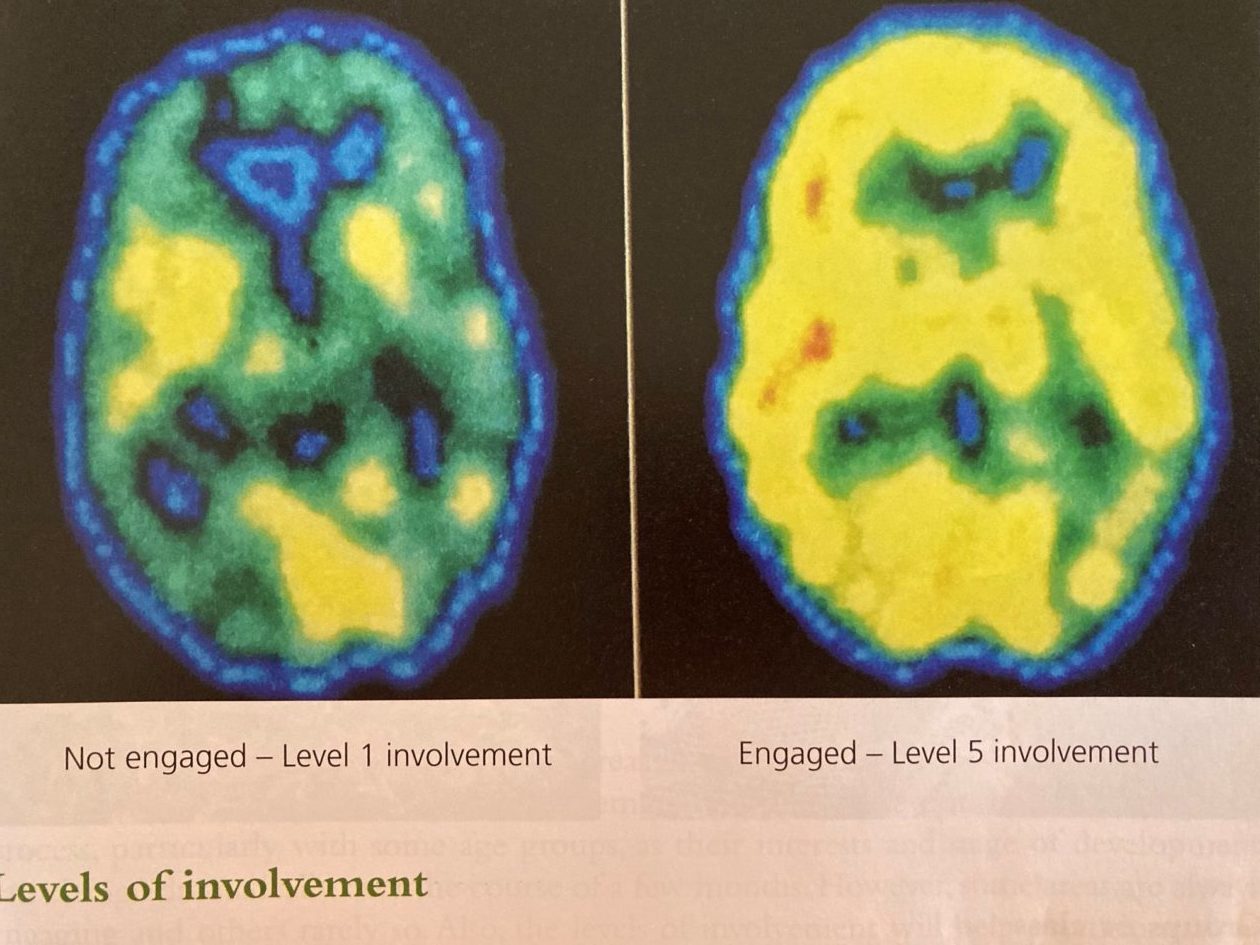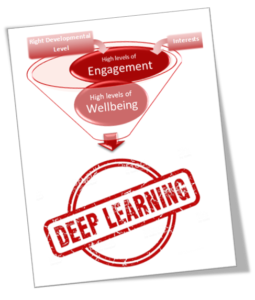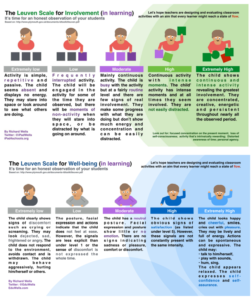![]()
Leuven Involvement Scale
Resources
What is this?
Ferre Laevers is the Director of the Research Centre for Experiential Education, Leuven University, Belgium, and the Leuven Scale creator. These are two scales that practitioners can use to measure the levels of wellbeing and involvement in children during play.
Education, Leuven University, Belgium, and the Leuven Scale creator. These are two scales that practitioners can use to measure the levels of wellbeing and involvement in children during play.
“According to Laevers, high levels of both wellbeing and involvement allow children to experience deep learning”.
(famly, 2021)
If children are not happy and their wellbeing is low, they will not deeply engage and learn from experiences within the setting.
For high levels of engagement, children must be interested in the experience, and it must be at the right developmental level for them. If it is too easy, they will get bored and walk away; if it is too difficult, they will get frustrated and walk away.
“So many times people say ‘He’s really involved’ and actually he’s not, he’s just ‘doing it,” Sue explains. “Children are very biddable, and so if you give them a task to do, then they’ll do it for you, and they’ll smile. But that doesn’t mean they’re involved in it.”
(Allingham, 2021)
“A balance of responsive planning and intentional planning is essential in providing suitable experiences that connect with and extend children’s interests and motivations”.
(Realising the Ambition, Education Scotland, 2020, p. 63)
What does Level 5 engagement look like?
Level 5 engagement is the same level of concentration required when learning to drive a car and for children to climb a tree. When at level 5 involvement, connections are being made in the brain. The children will be “concentrating, creative, energetic and persistent” (Leuven Scale). This video shows children exhibiting level 5 involvement. At level 5 involvement, if practitioners choose to interact, they could disturb deep learning and the connections being made in the brain.
brain.
Laevers and Moon (1997) created The Ten Actions Points, “an inventory of ten types of initiatives that favour wellbeing and involvement” (p. 3).
THE TEN ACTION POINTS
- Rearrange the classroom in appealing corners or areas
- Check the content of the corners and replace unattractive materials with more appealing ones
- Introduce new and unconventional materials and activities
- Observe children, discover their interests and find activities that meet these orientations
- Support ongoing activities through stimulating impulses and enriching interventions
- Widen the possibilities for free initiative and support them with sound rules and agreements
- Explore the relation with each of the children and between children and try to improve it
- Introduce activities that help children to explore the world of behaviour, feelings and values
- Identify children with emotional problems and work out sustaining interventions
- Identify children with developmental needs and work out interventions that engender involvement within the problem area.
How can we use these scales?
The scales can be used generally to assess:
-
- Individual children’s wellbeing and involvement in the setting
- As part of settling-in assessments
- To reflect on the areas of the environment, resources and experiences that are engaging or not engaging the children
- Interactions and how to engage the child further in the moment.
They can also be used for practitioners to measure their own wellbeing and involvement. Level 4 or 5 involvement is what we strive for all children to exhibit in their play. Consider when and where levels of engagement are high (or low) in your setting? The scales can be used as a common language in the setting, a lens to reflect on children’s wellbeing and involvement, and a measurement tool.
How do we increase wellbeing and involvement?
To increase involvement and wellbeing, we must first understand what the children tell us about their wellbeing or involvement behaviour.
If all behaviour is communication, what are they trying to say?
-
- Are they sad that their friend isn’t here today?
- Are they hungry?
- Are they bored and need more resources in their play to interest and challenge them?
- Do they need engagement or nurture from a practitioner?
- Do they have barriers to learning that require intervention?
Once this has been established, it informs what practitioners must do to support the child and therefore increase wellbeing and/or involvement levels. Using knowledge of the child and Early Level Pedagogy to provide quality environments, interactions, and experiences to increase engagement.
Linked Areas of Practice
Creating the Climate & Culture
Learning Environment
Observations
Planning
Play
Spaces
Ferre Laevers interview by Early Years Scotland:


